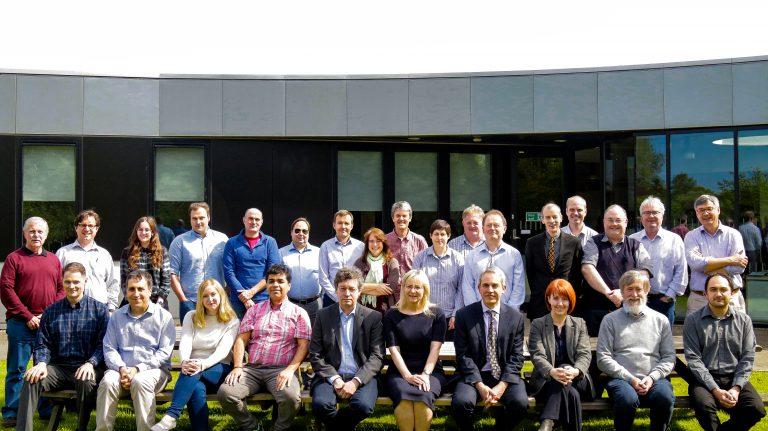UK-led Signal and Data Transport consortium concludes design work

The detailed design of this vital element has been led by the Jodrell Bank Centre for Astrophysics (JBCA) group at University of Manchester (UoM) in the UK, as part of a consortium that brought together 15 different organisations spread across eight countries.
They faced the challenge of designing a system that will be required to transport unprecedented amounts of data over vast distances, while ensuring that signals are synchronised in a way that enables the arrays to operate together like a single telescope, a huge challenge given the large number of antennas spread over hundreds of kilometres.
During four and a half years of collaboration, consortium members were responsible for the design of two data transport networks: the first being the Digital Data Backhaul (DDBH) that transports signals from the radio telescopes to the Central Signal Processor (CSP) on site, where the initial processing takes place – known as beamforming and correlation. The second network transfers data products from the CSP to the Science Data Processor (SDP), located hundreds of kilometres away. There the data for actual science will be processed before being distributed to the SKA Regional Centres around the world. The data rates involved are huge, in total equivalent to about a third of the world’s internet traffic. In addition, SaDT also designed a network that connects all the telescopes locations and transports the telescopes’ monitoring and control information, together with the general communications traffic.
The consortium’s work also included the design of clocks and a custom-made frequency distribution system. A University of Western Australia (UWA)-led effort was selected for the synchronisation of the SKA-mid dishes in South Africa while a Tsinghua University-led design was selected for the SKA-low antennas in Australia (read more here).
“The SKA’s scale has been a huge challenge. The consortium has done great work to get to this stage and overcome incredible technical difficulties,” said SKA Organisation Project Manager for SaDT André van Es. “The synchronisation we need to achieve is challenged not only by the large distances that we need to cover, but also the environmental conditions that affect the signals on their way from the antennas to the processing facilities – we have to compensate for all of this.”
“The precision of the synchronisation is truly mind-boggling – the accuracy is much better than a billionth of a millisecond!” said Consortium Lead Prof. Keith Grainge from the University of Manchester. “As an example, even light, which is the fastest thing there is, will travel less than a millimetre in this time.”
“I’m very proud of the whole team,” Prof. Grainge added. “I’d like to thank all consortium members for their sterling work to design this complex set of networks and synchronisation systems – no mean feat when we’re talking about the world’s largest radio telescope!”
SaDT was one of 12 international engineering consortia that were formed in November 2013, representing 500 engineers and scientists in 20 countries. Nine of the consortia each focused on a core component of the telescope, all critical to the overall success of the project, while three others are developing advanced instrumentation for the telescope.
The nine consortia are all undergoing Critical Design Reviews (CDRs) in 2018 and 2019. In this final stage, the proposed design is examined in detail by a panel of international experts and must meet the project’s tough engineering requirements to be approved, so that a construction proposal for the telescope can be developed.
While this milestone means the SaDT consortium formally disbands, the SKA Organisation will continue to work with selected institutions within the participating countries through the bridging period, relying on their expertise as the project progresses towards construction.
SaDT consortium members were as follows: Australia’s Commonwealth Scientific and Industrial Research Organisation (CSIRO), Australia Academic and Research Network (AARNet) and The University of Western Australia (UWA); Tsinghua University, China; National Centre for Radio Astrophysics (NCRA), India; Joint Institute for VLBI ERIC (JIVE), The Netherlands; ENGAGE SKA/Instituto de Telecomunicações, Portugal; South African Radio Astronomy Observatory (SARAO), Nelson Mandela University (NMU), South African National Research Network (SANReN), National Metrology Institute of South Africa (NMISA); University of Granada, Spain; University of Manchester and National Physical Laboratory (NPL), UK; and GÉANT.
Read more about the SKA-mid Phase Synchronisation System in this technical paper.




